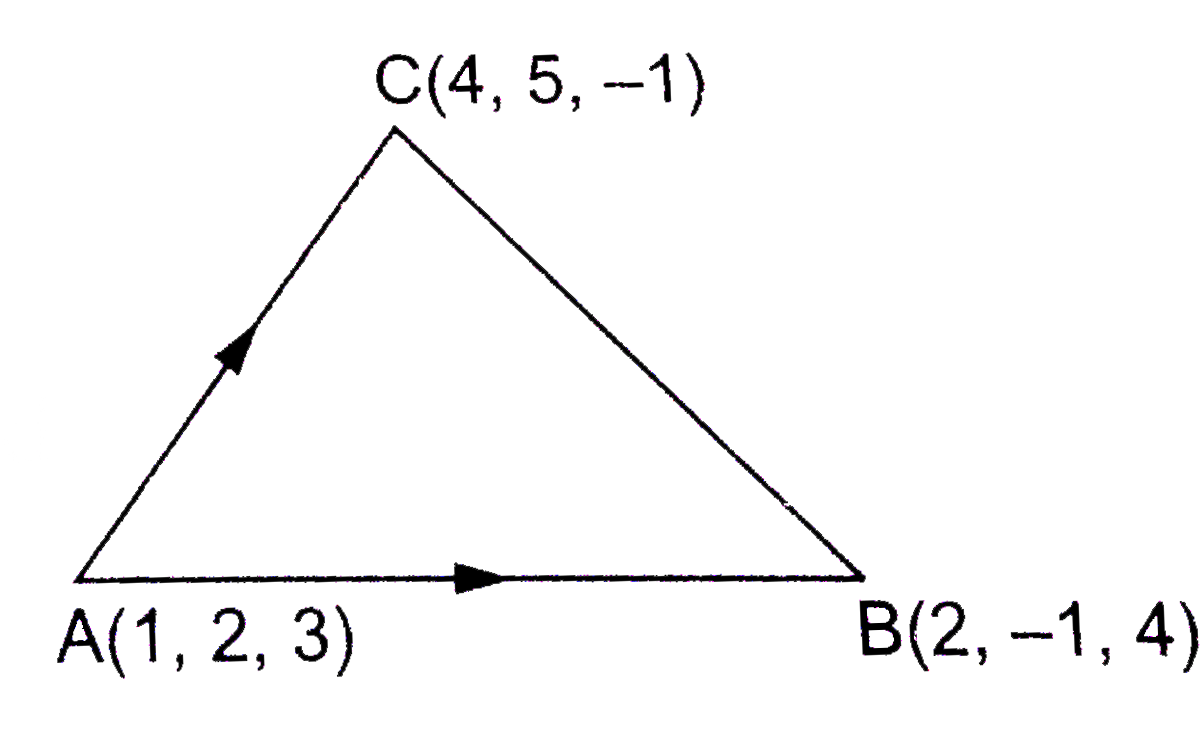Using vectors, find the area of the △ABC, whose vertices are A(1,2,3),B(2,−1,4)andC(4,5,−1).
Video Solution
Text Solution
We have
Position vector of A=(ˆi+2ˆj+3ˆk),
position vector of B=(2ˆi−ˆj+4ˆk)and
position vector of C=(4ˆi+5ˆj−4ˆk).
∴−−→AB= ( position vector of B) - ( position vector of A)
=(2ˆi−ˆj+4ˆk)−(ˆi+2ˆj+3ˆk)=(ˆi−3ˆj+ˆk).
−−→AC= (position vector of C) - ( position vector of A)
=(4ˆi+5ˆj−ˆk)−(ˆi+2ˆj+3ˆk)=(3ˆi+3ˆj−4ˆk).
∴ area of △ABC=∣∣∣12(−−→AB×−−→AC)∣∣∣.
Now, −−→AB×−−→AC=∣∣
∣
∣∣ˆiˆjˆk1−3133−4∣∣
∣
∣∣
=(12−3)ˆi−(−4−3)ˆj+(3+9)ˆk
=(9ˆi+7ˆj+12ˆk).
∴ area of △ABC=12∣∣∣−−→AB×−−→AC∣∣∣
=12∣∣(9ˆi+7ˆj+12ˆk)∣∣=12.√(9)2+72+(12)2
=12.√(81+49+144)=12√274 sq units .
Hence, the area of the area of △ABCis12√274 sq units

|
Updated on:21/07/2023
Topper's Solved these Questions
- BOOK - RS AGGARWALCHAPTER - CROSS,OR VECTOR, PRODUCT OF VECTORSEXERCISE - Exercise 2426videos
CROSS,OR VECTOR, PRODUCT OF VECTORS
- BOOK - RS AGGARWALCHAPTER - CONTINUITY AND DIFFERENTIABILITYEXERCISE - Exercise 9C9videos
CONTINUITY AND DIFFERENTIABILITY
- BOOK - RS AGGARWALCHAPTER - DEFINITE INTEGRALSEXERCISE - Objective Questions73videos
DEFINITE INTEGRALS
Similar Questions
Knowledge Check
- Question 1 - Select One
The area of the triangle whose vertices are A (1,2,3) B (2,−l,l) and C (l,2,−4) is
A7√10squnitsB12√10squnitsC72√10squnitsDNone of the these
Using vectors, find the area of the △ABC, whose vertices are A(1,2,3),B(2,−1,4)andC(4,5,−1).
View SolutionUsing vectors, find the area of the ΔABC with vertices A(1, 2, 3), B(2, -1, 4) and C(4, 5, -1)
View SolutionFind the area of the traingle ABC whose vertices are :
A(1,2,4);B(−2,1,2) and C(2,4,−3).View SolutionFind the area of the triangle whose vertices are A(1,2,3),B(2,3,1) and C(3,1,2)
View SolutionFind the area of the triangle whose vertices are: (1,4),(2,3),(−5,−3)
View SolutionFind the area of the triangle whose vertices are A(3,−1,2), B(1,−1,−3)and C(4,−3,1).
View SolutionFind the area of the triangle whose vertices are: (3,1),(4,3),(−5,4)
View Solution

